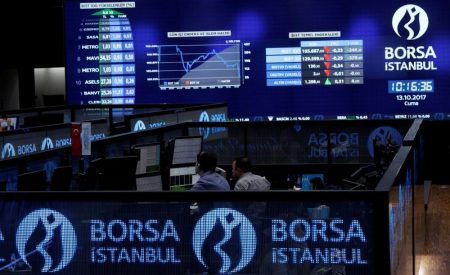Inflation unexpectedly ticked higher in February thanks to a jump in the cost of gasoline and rent, underscoring the challenge of taming price pressures within the economy.
The Labor Department said Tuesday that the consumer price index, a broad measure of the price of everyday goods including gasoline, groceries and rent, rose 0.4% in February from the previous month. Prices climbed 3.2% from the same time last year.
Both of those figures came in higher than the 0.3% monthly increase and 3.1% headline gain recorded in January.
WHY ARE GROCERIES STILL SO EXPENSIVE?
Other parts of the report also indicated that inflation has been slow to retreat. Core prices, which exclude the more volatile measurements of food and energy, climbed 0.4%, as they did in January. It rose 3.8% annually. Both of those figures are slightly higher than estimates.
Altogether, the report indicates that while inflation has fallen considerably from a peak of 9.1%, it remains above the Federal Reserve’s 2% target.
THE NUMBER OF HIGH-PAYING JOBS IS DWINDLING
High inflation has created severe financial pressures for most U.S. households, which are forced to pay more for everyday necessities like food and rent. The burden is disproportionately borne by low-income Americans, whose already-stretched paychecks are heavily affected by price fluctuations.
Housing and gasoline costs were the biggest drivers of inflation last month, accounting for more than 60% of the total monthly increase.
Rent costs rose 0.4% for the month and are up 5.8% from the same time last year. Rising rents are concerning because higher housing costs most directly and acutely affect household budgets.
Gasoline prices, meanwhile, surged 3.8% over the course of February. However, they remain down 3.9% when compared with the previous year.
Other price gains also proved persistent in January.
Food prices, a visceral reminder of inflation for many Americans, were unchanged over the course of the month. However, grocery prices are up 1% from the same time last year.
MORE AMERICANS ARE GETTING A SECOND JOB TO OFFSET STING OF HIGH INFLATION
The price of airline tickets and car insurance also jumped in February.

“Inflation continues to churn above 3%, and once again shelter costs were the main villain. With home prices expected to rise this year and rents falling only slowly, the long-awaited fall in shelter prices isn’t coming to the rescue any time soon,” said Robert Frick, corporate economist at the Navy Federal Credit Union. “The good news is food prices didn’t rise last month, but the bad news is one of the other main pain points for consumers, transportation costs, rose quite a bit.”
The Federal Reserve has signaled it is closely watching the report for evidence inflation is continuing to subside as policymakers try to determine what comes next for interest rates in 2024.
Central bank officials have opened the door to cutting interest rates this year but indicated they will not do so until they are confident that inflation is conquered.
“The committee does not expect that it will be appropriate to reduce the target range until it has gained greater confidence that inflation is moving sustainably toward 2%,” Fed Chair Jerome Powell said last week while testifying on Capitol Hill.
GET FOX BUSINESS ON THE GO BY CLICKING HERE
Stock futures rose Tuesday morning as investors shook off the surprisingly hot February inflation report. Market pricing still indicates the first interest rate cut will come in June, according to the CME Group’s FedWatch tool.
| Ticker | Security | Last | Change | Change % |
|---|---|---|---|---|
| I:DJI | DOW JONES AVERAGES | 39375.87 | +67.87 | +0.17% |
| I:COMP | NASDAQ COMPOSITE INDEX | 18352.75894 | +164.46 | +0.90% |
| SP500 | S&P 500 | 5567.19 | +30.17 | +0.54% |
“Another hotter-than-expected CPI reading may breathe new life into the sticky inflation narrative, but whether it actually delays rate cuts is a different story,” said Chris Larkin, managing director of trading and investing at E*Trade. “Until [Fed officials] say otherwise, their plan is to cut rate cuts in the second half of the year. ‘Sticky’ doesn’t necessarily mean ‘overheating.’”
Read the full article here











